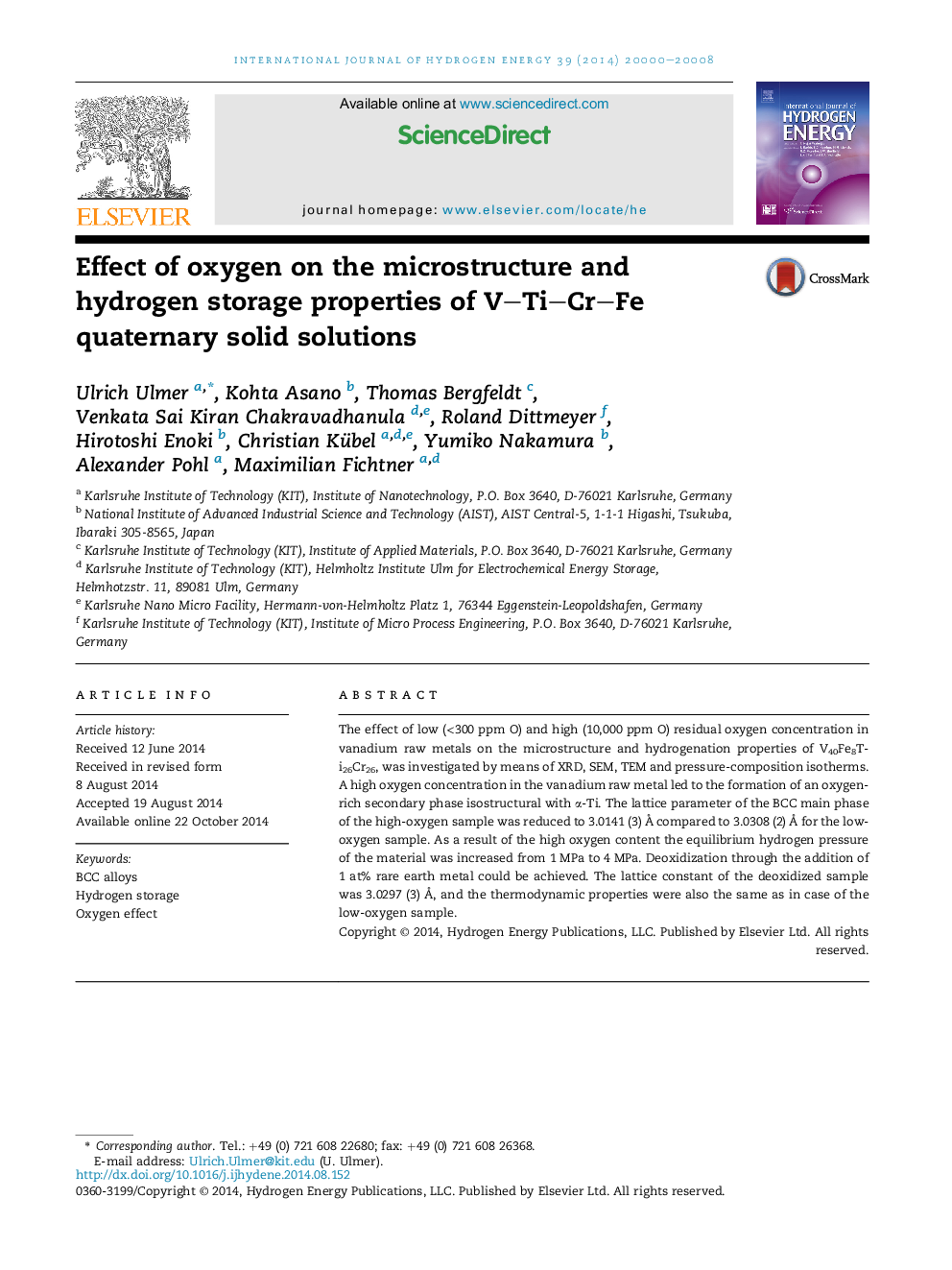| Article ID | Journal | Published Year | Pages | File Type |
|---|---|---|---|---|
| 7717332 | International Journal of Hydrogen Energy | 2014 | 9 Pages |
Abstract
The effect of low (<300 ppm O) and high (10,000 ppm O) residual oxygen concentration in vanadium raw metals on the microstructure and hydrogenation properties of V40Fe8Ti26Cr26, was investigated by means of XRD, SEM, TEM and pressure-composition isotherms. A high oxygen concentration in the vanadium raw metal led to the formation of an oxygen-rich secondary phase isostructural with α-Ti. The lattice parameter of the BCC main phase of the high-oxygen sample was reduced to 3.0141 (3) Ã
compared to 3.0308 (2)Â Ã
for the low-oxygen sample. As a result of the high oxygen content the equilibrium hydrogen pressure of the material was increased from 1Â MPa to 4Â MPa. Deoxidization through the addition of 1Â at% rare earth metal could be achieved. The lattice constant of the deoxidized sample was 3.0297 (3)Â Ã
, and the thermodynamic properties were also the same as in case of the low-oxygen sample.
Related Topics
Physical Sciences and Engineering
Chemistry
Electrochemistry
Authors
Ulrich Ulmer, Kohta Asano, Thomas Bergfeldt, Venkata Sai Kiran Chakravadhanula, Roland Dittmeyer, Hirotoshi Enoki, Christian Kübel, Yumiko Nakamura, Alexander Pohl, Maximilian Fichtner,
